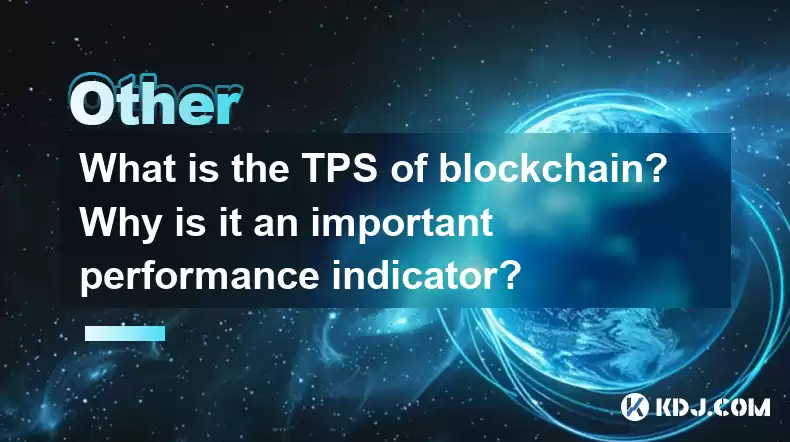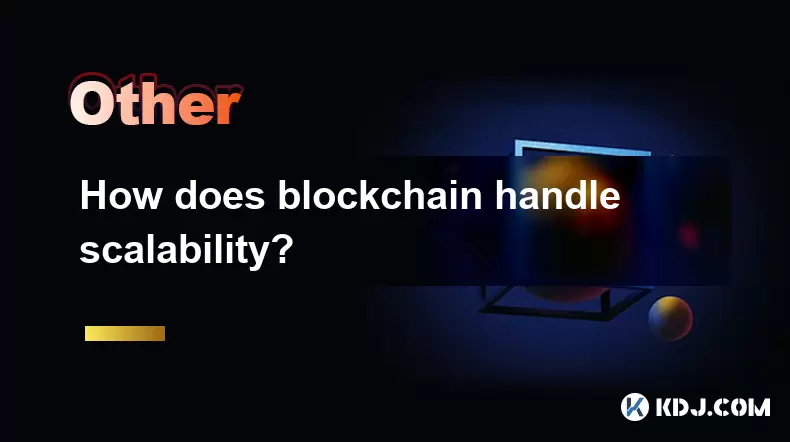-
 Bitcoin
Bitcoin $112400
-1.07% -
 Ethereum
Ethereum $3409
-3.27% -
 XRP
XRP $2.784
-6.60% -
 Tether USDt
Tether USDt $0.9997
-0.03% -
 BNB
BNB $739.3
-2.09% -
 Solana
Solana $158.0
-2.90% -
 USDC
USDC $0.9998
-0.02% -
 TRON
TRON $0.3213
-0.94% -
 Dogecoin
Dogecoin $0.1929
-5.01% -
 Cardano
Cardano $0.6974
-2.82% -
 Hyperliquid
Hyperliquid $36.69
-2.31% -
 Sui
Sui $3.327
-4.80% -
 Stellar
Stellar $0.3672
-5.18% -
 Chainlink
Chainlink $15.65
-3.07% -
 Bitcoin Cash
Bitcoin Cash $525.0
-1.68% -
 Hedera
Hedera $0.2291
-6.00% -
 Avalanche
Avalanche $20.91
-2.96% -
 Ethena USDe
Ethena USDe $1.000
0.00% -
 Toncoin
Toncoin $3.520
-1.12% -
 UNUS SED LEO
UNUS SED LEO $8.968
0.14% -
 Litecoin
Litecoin $105.7
0.26% -
 Shiba Inu
Shiba Inu $0.00001181
-1.79% -
 Polkadot
Polkadot $3.492
-2.08% -
 Uniswap
Uniswap $8.800
-3.10% -
 Dai
Dai $0.9999
-0.01% -
 Monero
Monero $289.9
-3.17% -
 Bitget Token
Bitget Token $4.243
-1.27% -
 Pepe
Pepe $0.00001006
-3.67% -
 Cronos
Cronos $0.1248
-5.68% -
 Aave
Aave $249.7
-2.50%
What is the TPS of blockchain? Why is it an important performance indicator?
TPS measures blockchain transaction speed; higher TPS enhances scalability and user experience, impacting costs and network throughput in cryptocurrency operations.
Apr 29, 2025 at 02:00 am

What is the TPS of Blockchain? Why is it an Important Performance Indicator?
Transactions per second (TPS) is a critical metric in the world of blockchain technology. It measures the number of transactions that a blockchain network can process in one second. This performance indicator is essential for assessing the scalability and efficiency of a blockchain system. In this article, we will delve into what TPS means, why it is crucial for blockchain networks, and how it impacts various aspects of cryptocurrency operations.
Understanding TPS in Blockchain
TPS, or transactions per second, is a straightforward yet powerful metric that quantifies the speed at which a blockchain can process transactions. For instance, Bitcoin, one of the earliest and most well-known blockchains, has a TPS rate of around 7 transactions per second. In contrast, newer blockchains like Solana boast a TPS rate that can exceed 65,000 transactions per second.
To grasp the significance of TPS, it's important to understand how it is calculated. TPS is derived by dividing the total number of transactions processed within a given timeframe by the number of seconds in that timeframe. For example, if a blockchain processes 300 transactions in one minute, its TPS would be 300 divided by 60, resulting in 5 TPS.
Why TPS is a Crucial Performance Indicator
The importance of TPS in blockchain networks cannot be overstated. It directly affects the scalability and usability of a blockchain. A higher TPS means that the network can handle more transactions simultaneously, leading to faster transaction processing times and a better user experience.
For example, consider a blockchain used for a payment system. If the TPS is low, users may experience long waiting times for their transactions to be confirmed, which can be frustrating and may deter them from using the system. Conversely, a high TPS ensures that transactions are processed quickly, making the system more efficient and appealing to users.
Impact of TPS on Cryptocurrency Operations
The TPS of a blockchain significantly impacts various aspects of cryptocurrency operations. For instance, it affects the cost of transactions. Blockchains with higher TPS can process more transactions per block, which can lead to lower transaction fees. This is because the cost of processing transactions is spread over a larger number of transactions.
Additionally, TPS influences the overall throughput of the network. A higher TPS means that the network can handle a larger volume of transactions, making it more suitable for applications that require high transaction volumes, such as decentralized exchanges or gaming platforms.
Comparing TPS Across Different Blockchains
Comparing TPS across different blockchains provides valuable insights into their performance and scalability. For example, Ethereum, another prominent blockchain, has a TPS rate of around 15-20 transactions per second. This is significantly higher than Bitcoin but still falls short of newer blockchains like Solana and Cardano, which have TPS rates in the thousands.
To illustrate the differences, let's look at some specific examples:
- Bitcoin: Approximately 7 TPS
- Ethereum: Approximately 15-20 TPS
- Solana: Over 65,000 TPS
- Cardano: Up to 250 TPS
These numbers highlight the vast differences in performance among various blockchains and underscore the importance of TPS as a performance indicator.
Factors Affecting TPS
Several factors influence the TPS of a blockchain. These include the consensus mechanism, block size, and network architecture. For example, blockchains that use Proof of Work (PoW) as their consensus mechanism, like Bitcoin, tend to have lower TPS due to the computational intensity of the mining process. In contrast, blockchains using Proof of Stake (PoS) or other more efficient consensus mechanisms can achieve higher TPS.
Block size also plays a crucial role. Larger block sizes can accommodate more transactions, potentially increasing TPS. However, larger blocks can lead to longer propagation times across the network, which can affect overall performance.
Enhancing TPS in Blockchain Networks
Improving the TPS of a blockchain is a key focus for developers and researchers in the field. Various techniques have been proposed and implemented to enhance TPS, including sharding, layer-2 solutions, and optimizing consensus algorithms.
Sharding: This technique involves dividing the blockchain into smaller, more manageable parts called shards. Each shard processes its own set of transactions, allowing the overall network to process more transactions simultaneously and thus increasing TPS.
Layer-2 Solutions: These solutions, such as Lightning Network for Bitcoin and Optimistic Rollups for Ethereum, operate on top of the main blockchain and handle transactions off-chain, reducing the load on the main network and improving TPS.
Optimizing Consensus Algorithms: By developing more efficient consensus algorithms, developers can reduce the time required to validate and add transactions to the blockchain, thereby increasing TPS.
Real-World Implications of TPS
The real-world implications of TPS are significant for the adoption and usability of blockchain technology. For instance, a blockchain with a high TPS is better suited for applications that require quick transaction processing, such as retail payments or high-frequency trading.
Conversely, a blockchain with a low TPS may struggle to meet the demands of such applications, limiting its practical use. This is why many blockchain projects are focused on improving their TPS to enhance their competitiveness and appeal to users.
Frequently Asked Questions
Q: How does TPS affect the security of a blockchain?
A: TPS itself does not directly affect the security of a blockchain. However, the methods used to increase TPS, such as larger block sizes or different consensus mechanisms, can have security implications. For example, larger blocks may increase the risk of network attacks due to longer propagation times, while different consensus mechanisms may alter the security model of the blockchain.
Q: Can TPS be too high, and if so, what are the potential drawbacks?
A: Yes, TPS can be too high. Extremely high TPS rates can lead to increased centralization, as only nodes with significant computational power can keep up with the network. This can compromise the decentralized nature of the blockchain. Additionally, high TPS can lead to increased energy consumption and higher hardware requirements for participants.
Q: How do developers measure and test TPS in a blockchain?
A: Developers measure and test TPS by creating test networks or using simulation tools to generate a high volume of transactions and monitor how the blockchain processes them. They use metrics such as average block time, transaction confirmation time, and network throughput to assess the TPS. Stress testing and performance benchmarking are common practices to ensure the blockchain can handle the desired TPS under various conditions.
Q: Are there any trade-offs between TPS and other blockchain performance metrics?
A: Yes, there are trade-offs between TPS and other blockchain performance metrics such as decentralization and security. For example, increasing TPS through larger block sizes or more efficient consensus mechanisms may lead to reduced decentralization, as fewer nodes can participate effectively. Additionally, enhancing TPS might require compromises in terms of the blockchain's security model, as different approaches to scaling can introduce new vulnerabilities.
Disclaimer:info@kdj.com
The information provided is not trading advice. kdj.com does not assume any responsibility for any investments made based on the information provided in this article. Cryptocurrencies are highly volatile and it is highly recommended that you invest with caution after thorough research!
If you believe that the content used on this website infringes your copyright, please contact us immediately (info@kdj.com) and we will delete it promptly.
- Ruvi AI: The Millionaire Maker with a Price Spike on the Horizon?
- 2025-08-03 02:50:12
- DOGE, Utility Coins, and Smart Money: A New Era for Crypto Investing?
- 2025-08-03 02:50:12
- Punisher Coin: Is This Meme Coin the Crypto Investment with 100x ROI Potential?
- 2025-08-03 03:30:12
- Ruvi AI, XRP, and CoinMarketCap: Decoding the Crypto Buzz
- 2025-08-03 03:30:12
- Solana, WeWake, and Presales: What's Hot in the Crypto Space?
- 2025-08-03 03:35:25
- MoonBull, LOFI Pepe: Navigating the Meme Coin Mania and the Best Crypto Whitelist
- 2025-08-03 04:10:12
Related knowledge

What is the difference between on-chain and off-chain transactions?
Aug 02,2025 at 04:22pm
Understanding On-Chain TransactionsOn-chain transactions refer to digital asset transfers that are recorded directly on a blockchain ledger. These tra...

What is the double-spending problem and how does blockchain prevent it?
Aug 02,2025 at 01:07pm
Understanding the Double-Spending ProblemThe double-spending problem is a fundamental challenge in digital currency systems where the same digital tok...

What is the difference between a blockchain and a database?
Aug 01,2025 at 09:36pm
Understanding the Core Structure of a BlockchainA blockchain is a decentralized digital ledger that records data in a series of immutable blocks linke...

How does blockchain handle scalability?
Aug 02,2025 at 02:58pm
Understanding Blockchain Scalability ChallengesBlockchain scalability refers to a network's ability to handle an increasing volume of transactions wit...

What are the different types of blockchains?
Aug 03,2025 at 03:01am
Public Blockchains: Open and Decentralized NetworksPublic blockchains are the most widely recognized type of blockchain, characterized by their open a...

What is a hash in a blockchain?
Aug 02,2025 at 05:28am
Understanding the Concept of Hash in BlockchainA hash in the context of blockchain technology refers to a unique digital fingerprint generated by a cr...

What is the difference between on-chain and off-chain transactions?
Aug 02,2025 at 04:22pm
Understanding On-Chain TransactionsOn-chain transactions refer to digital asset transfers that are recorded directly on a blockchain ledger. These tra...

What is the double-spending problem and how does blockchain prevent it?
Aug 02,2025 at 01:07pm
Understanding the Double-Spending ProblemThe double-spending problem is a fundamental challenge in digital currency systems where the same digital tok...

What is the difference between a blockchain and a database?
Aug 01,2025 at 09:36pm
Understanding the Core Structure of a BlockchainA blockchain is a decentralized digital ledger that records data in a series of immutable blocks linke...

How does blockchain handle scalability?
Aug 02,2025 at 02:58pm
Understanding Blockchain Scalability ChallengesBlockchain scalability refers to a network's ability to handle an increasing volume of transactions wit...

What are the different types of blockchains?
Aug 03,2025 at 03:01am
Public Blockchains: Open and Decentralized NetworksPublic blockchains are the most widely recognized type of blockchain, characterized by their open a...

What is a hash in a blockchain?
Aug 02,2025 at 05:28am
Understanding the Concept of Hash in BlockchainA hash in the context of blockchain technology refers to a unique digital fingerprint generated by a cr...
See all articles

























































































